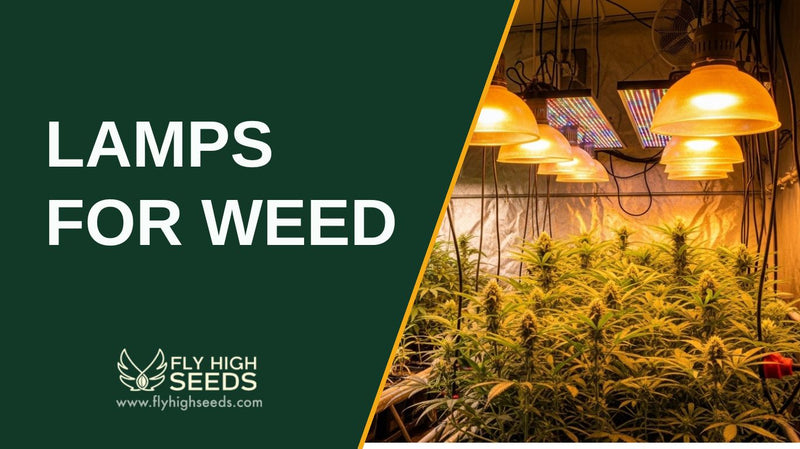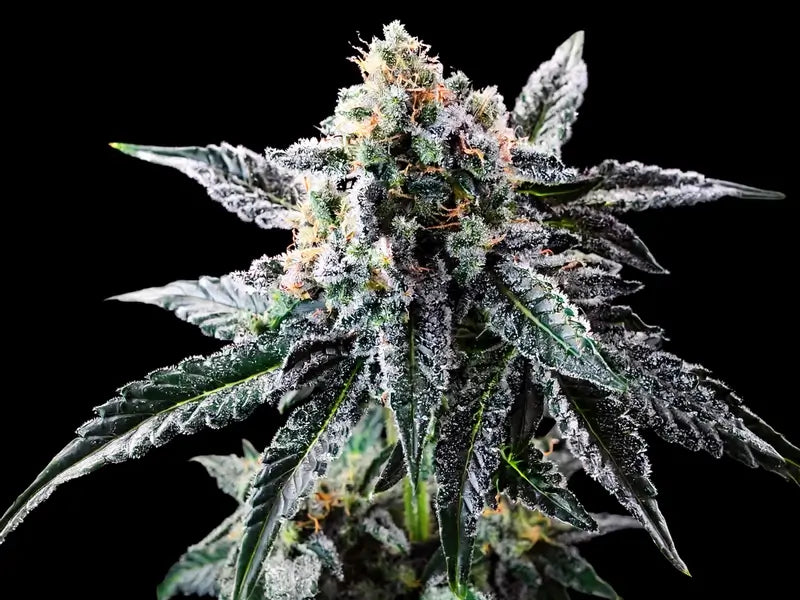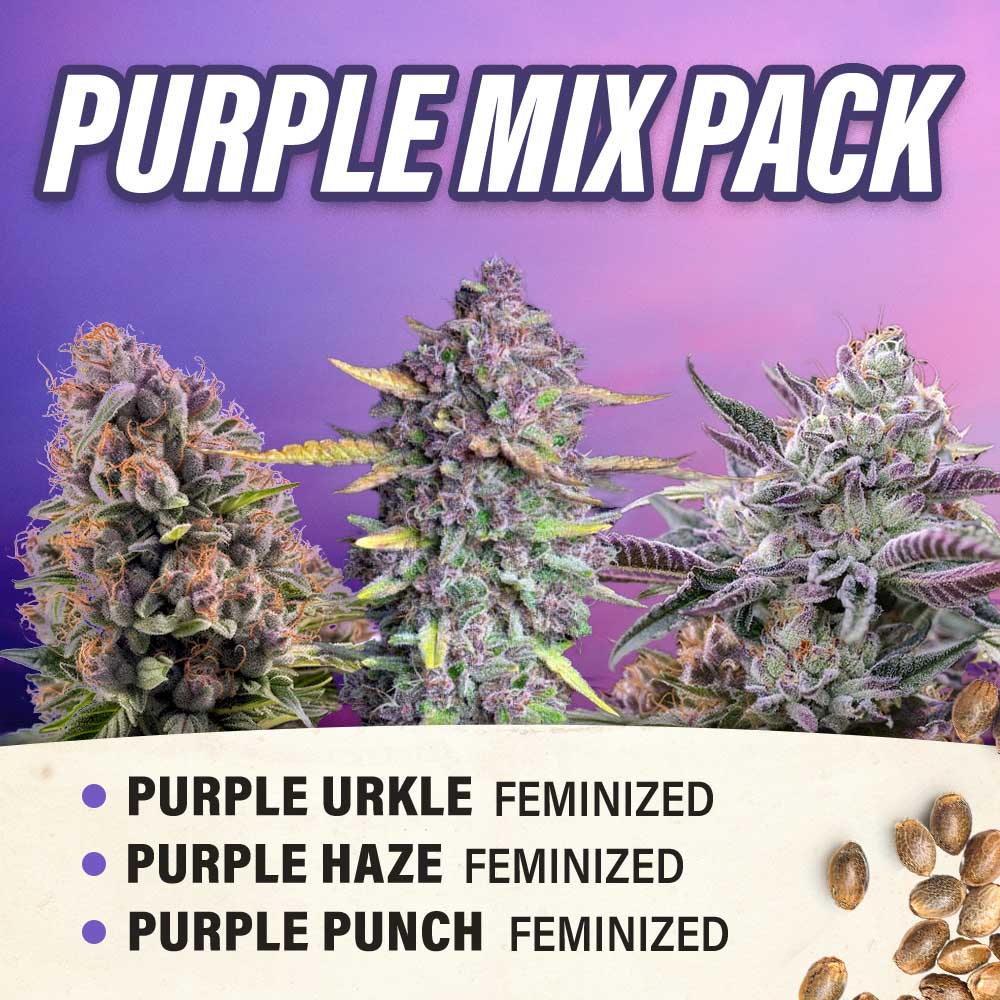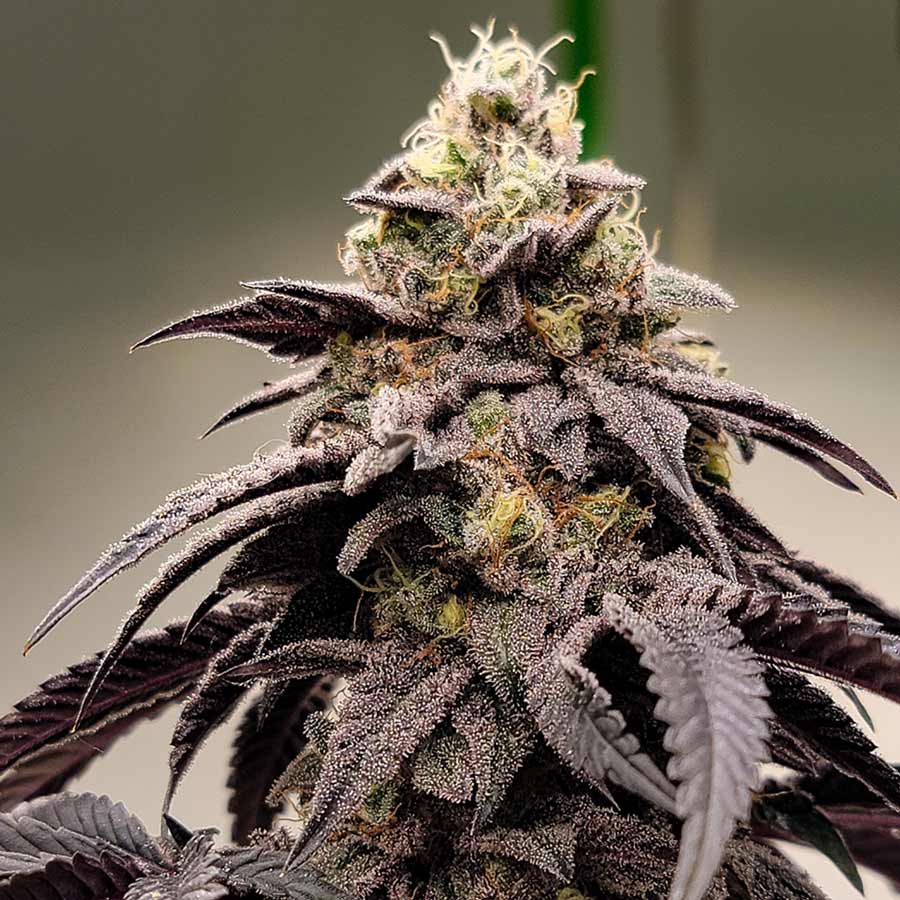Lamps for Weed: 5 Best Cannabis Lighting Options

Choosing the right lamps for weed is one of the most important steps in successful cannabis cultivation. In this guide, we’ll break down the best cannabis lighting options to help you achieve optimal growth at every stage of the grow cycle.
What are Cannabis Grow Lights?
Cannabis grow lights are artificial lighting systems designed to mimic natural sunlight and support the growth of marijuana plants indoors. They provide the specific light spectrum and intensity needed for photosynthesis, helping plants grow tall, develop healthy leaves, and produce high-quality buds.
These lights are essential for indoor cannabis cultivation, as they enable growers to control the light cycle and optimize conditions during the vegetative stage and flowering stage for robust growth and maximum yield.
What are the Best Lighting Choices for Cannabis Plants?
When growing cannabis indoors, choosing the right lighting system is key to ensuring your plants receive the right light spectrum and intensity throughout their grow cycle. Different types of grow lights offer various advantages depending on your grow space, budget, and desired results.
LED Grow Lights
LED grow lights are among the most popular and energy-efficient options for cannabis growers. They offer full spectrum light, including blue light for vegetative growth and red light for the flowering stage. Modern LEDs provide uniform light distribution across the plant canopy and operate at lower temperatures, reducing the need for complex ventilation systems. Brands like Mars Hydro and Spider Farmer offer versatile grow lights ideal for both beginners and experienced growers.
High-Pressure Sodium (HPS) Lights
HPS lights are a type of high intensity discharge lighting known for delivering strong red spectrum light, making them highly effective during the flowering stage. While they produce more light for bud development, they also generate more heat and consume more power. Proper ventilation is essential when using HPS lights to avoid stressing your plants.
Metal Halide (MH) Lights
Metal halide lights are another form of HID lights that emit a blue light spectrum, which is ideal for the vegetative phase. They encourage dense foliage and strong structural growth but are less efficient and hotter compared to LEDs. MH lights are often used in combination with HPS systems to support different stages of growth.
Fluorescent Grow Lights (CFLs and T5s)

Fluorescent grow lights, including compact fluorescent bulbs (CFLs) and T5 tube lights, are suitable for small grow spaces or seedlings and clones. They produce less heat and use less power, but they may not deliver the intensity needed for full power growth of mature cannabis plants. Still, they can be effective for early-stage development or supplemental lighting.
Full Spectrum Lights
Full spectrum grow lights combine different light wavelengths to mimic natural light. They support cannabis lighting needs from seedling to harvest, promoting optimal growth and THC production. These lights are often found in high-quality LED systems that allow for customization and switching between vegetative and flowering stages.
How Do Grow Lights Impact Cannabis Plants?
Grow lights play a crucial role in how cannabis plants develop indoors by influencing everything from leaf growth to bud quality. The type, spectrum, and intensity of light directly affect plant behavior throughout the grow cycle.
- Photosynthesis Efficiency – Grow lights provide the necessary light wavelengths for photosynthesis, helping plants produce the energy they need to grow and thrive.
- Vegetative Growth Support – Blue light stimulates strong vegetative growth, encouraging plants to grow tall with healthy leaves and stems during the early phase.
- Flowering Stage Stimulation – Red light promotes bud formation and resin production, making it essential during the flowering stage for better yields and higher THC levels.
- Light Spectrum Balance – A full spectrum light ensures cannabis plants receive the right blend of wavelengths across all growth stages, leading to uniform development and robust growth.
- Bud Quality and Yield – Consistent, high intensity light exposure, especially in the red spectrum, improves bud density, flavor, and overall potency.
- Canopy Penetration – Powerful lights like LED bars and HID lights ensure that even lower branches receive enough light, supporting full-plant development.
- Controlled Environment Growth – Grow lights allow growers to simulate natural light cycles indoors, offering year-round cultivation regardless of outdoor conditions.
- Light Distribution and Coverage – Uniform light distribution ensures all areas of the plant canopy receive equal light, reducing stretch and improving overall plant health.
What to Avoid When Choosing Weed Grow Lights
Selecting the wrong grow lights can hinder your cannabis cultivation and lead to poor growth or reduced yields. Here are key pitfalls to avoid when choosing weed grow lights:
- Ignoring Light Spectrum – Avoid lights that don’t offer a full spectrum; cannabis plants need different light wavelengths during the vegetative and flowering phases.
- Low Light Intensity – Underpowered lights won’t penetrate the plant canopy, leading to weak lower growth and smaller buds.
- Poor Light Distribution – Uneven lighting causes plants to stretch or grow unevenly; choose options that ensure uniform light distribution.
- Overheating Issues – Lights like HPS that emit too much heat can stress plants without proper ventilation systems.
- High Power Consumption – Inefficient lights waste energy and raise electric bills; opt for energy efficient systems like quality LED grow lights.
- Wrong Size for Grow Space – Oversized or undersized lights can cause lighting imbalances; match your lights to the square foot coverage of your grow room or tent.
- Inflexible Setup – Avoid lights that can’t be adjusted in height or spectrum, especially when growing cannabis through different stages.
- Outdated Technology – Steer clear of older, less reliable options when newer lights like LED bars or full spectrum LEDs offer better performance and lifespan.
Final Thoughts

Choosing the right cannabis grow light setup can significantly influence your plant’s health, yield, and overall success—especially when growing indoors. By understanding the different lighting options and avoiding common mistakes, you’ll be well on your way to a thriving grow space.
Examine lighting solutions tailored to your grow room needs and start growing with confidence.
Frequently Asked Questions
How long should cannabis plants be under grow lights each day?
Cannabis plants typically need 18–24 hours of light per day during the vegetative stage and 12 hours during the flowering stage to trigger bud development.
Can I use regular household bulbs to grow cannabis?
Regular bulbs lack the proper light spectrum and intensity needed for cannabis growth. It's best to use dedicated grow lights designed for plant development.
Do grow lights need to be on at night?
Cannabis plants need a dark period, especially during flowering. Keeping grow lights on 24/7 can disrupt the grow cycle and reduce bud quality.
How far should grow lights be from cannabis plants?
Distance varies by light type. LED grow lights are usually placed 12–24 inches above the canopy, while HID lights may need to be 24–36 inches away to avoid heat stress.
When should I switch from vegetative to flowering light cycle?
Switch to a 12/12 light cycle once your cannabis plants have reached the desired size and maturity, typically after 4–8 weeks in the vegetative phase.
Do different cannabis strains need different lighting?
While all cannabis strains follow similar light requirements, some may respond better to specific light intensities or wavelengths. Adjust your light setup based on plant response.



